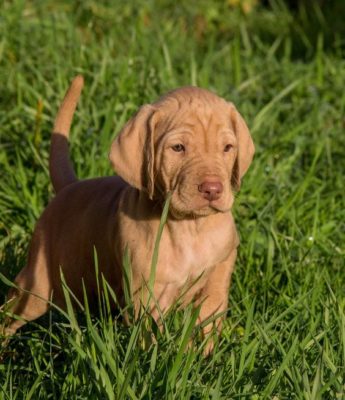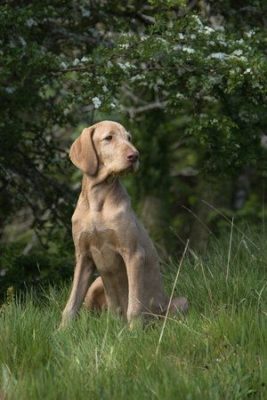Wirehaired Vizsla
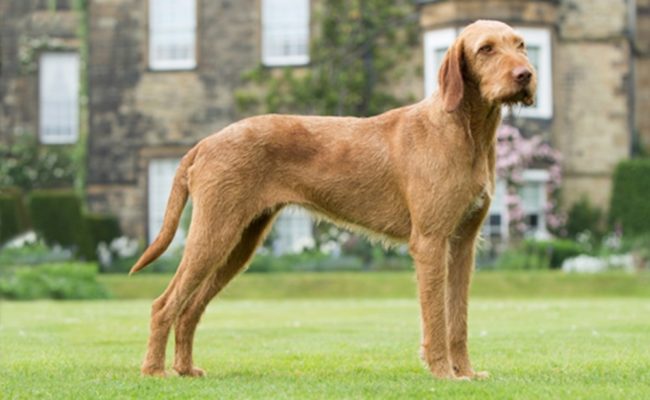
Wirehaired Vizslas have a gentle, loyal, and extremely affectionate personality. They are amiable dogs and love to become part of the family. Interaction and firm and consistent rules are the keys to keeping this breed out of trouble.
Table of Contents
Breed Information
| Another Name | Hungarian Wirehaired Vizsla, Drótszőrű magyar vizsla |
| Origin | Hungary |
| Height | Males 58-64 cm Females 54-60 cm |
| Weight | Males 25-27 kg Females 20-25 kg |
| Fur | Stiff, medium length |
| Color | Red, gold |
| Lifespan | 12-15 years |
| FCI Classification | Pointing Dogs |
| Group | Dogs for security, dogs for protection, dogs for children, dogs for hunting |
| Price | From $700 |
Breed Photos
Origin History
The Wirehaired Vizsla is a breed native to Hungary. Two breeders initially developed it in the 1930s. They intended to create a dog better suited for cold climates and water work with a thicker coat and a slightly larger build than that of the Hungarian Shorthair. It was accomplished by crossing two pedigreed Hungarian Vizslas with German stiff-haired pointers, a brown coloration. It is believed that some other breeds were also used to develop the breed during World War II, but information on which breeds and to what extent is limited. More recently, both types of dog tails have become popular again, and their numbers are growing significantly.
Appearance
The Wirehaired Vizsla can have two coat colors allowed in the breed standard: red and gold.
This breed is of medium size: the female dog is 54 to 60 cm at the withers, while the male dogs are 58 to 64 cm tall. The female’s weight is 20-25 kg, while the weight of the male is 25-27 kg.
The Wirehaired Vizsla has a slightly more solid appearance than the Hungarian Shorthaired Vizsla, but they are very similar. They have a muscular mid-length neck, transitioning to muscular shoulders and elbows kept close to a strong torso with even proportions. The chest is deep, and the back is level, with a slight slope to the low-set tail. The body is slightly longer than the height at the withers. The hind legs should be straight, with well-developed thigh muscles. Their legs are feline with short toes.
The Wirehaired Vizsla has a square head shape. It also has a strong jaw with a scissor bite and healthy white teeth. Their eyes should be oval, medium-sized, and slightly darker in color than their coat, with tightly fitting eyelids. Their gait is energetic but elegant at the same time.
Character
Wirehaired Vizslas have a gentle, loyal, and extremely affectionate personality. They are amiable dogs and love to become part of the family. Interaction and firm and consistent rules are the keys to keeping this breed out of trouble.
They are great with children and very loyal to their families. It means that they can also make good guard dogs, although they also get along well with strangers if they don’t perceive them as a threat. If left alone, a doghound can suffer from separation, and this can lead to unwanted behaviors such as barking, house pollution, destruction, and compulsive habits.
Care
Judging by its name, the Wirehaired Vizsla dog has a different coat from its short-haired relative. It should be stiff and short (no more than four centimeters in length) and have an undercoat, which becomes thicker during the winter months. The stiff facial and muzzle hair forms a beard and distinctive eyebrows, giving the dog a more refined appearance. Despite their hairier nature, they do not require much maintenance. Brushing once a week is enough to keep the dog clean and the house free of hair.
Training
The Wirehaired Vizsla is a sensitive dog that requires firm and consistent training from an early age. Although, if properly managed, they are very easy to train. But they can also become rebellious if they are bored and not trained enough.
Representatives of the breed are extremely sociable, happy to have companionship. However, if left alone for a long time, a Wirehaired Vizsla’s behavior can be destructive.
Common Diseases
Wirehaired Vizslas are healthy dogs that live 12 to 15 years. They tend to develop the following health problems:
- allergies;
- canine hyperuricosuria;
- epilepsy.
Nutrition
The diet of the Wirehaired Vizsla must be balanced. Don’t forget about meat, cereals, fish, and by-products, or use high-quality dry food. Keep an eye on your dog’s activity level and feed it accordingly.
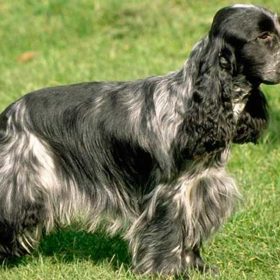 Russian Spaniel
Russian Spaniel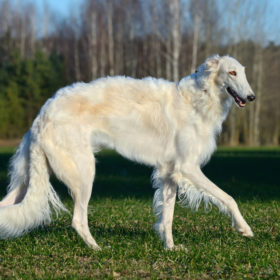 Borzoi
Borzoi Border Collie
Border Collie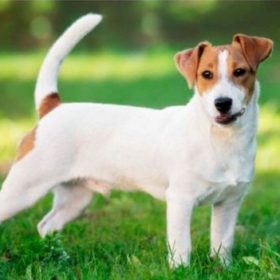 Jack Russell Terrier
Jack Russell Terrier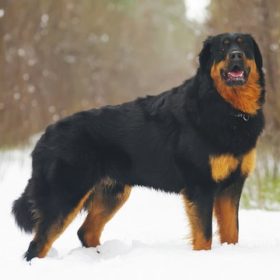 Buryat-Mongolian Wolfhound
Buryat-Mongolian Wolfhound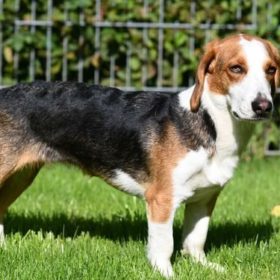 Westphalian Dachsbracke
Westphalian Dachsbracke